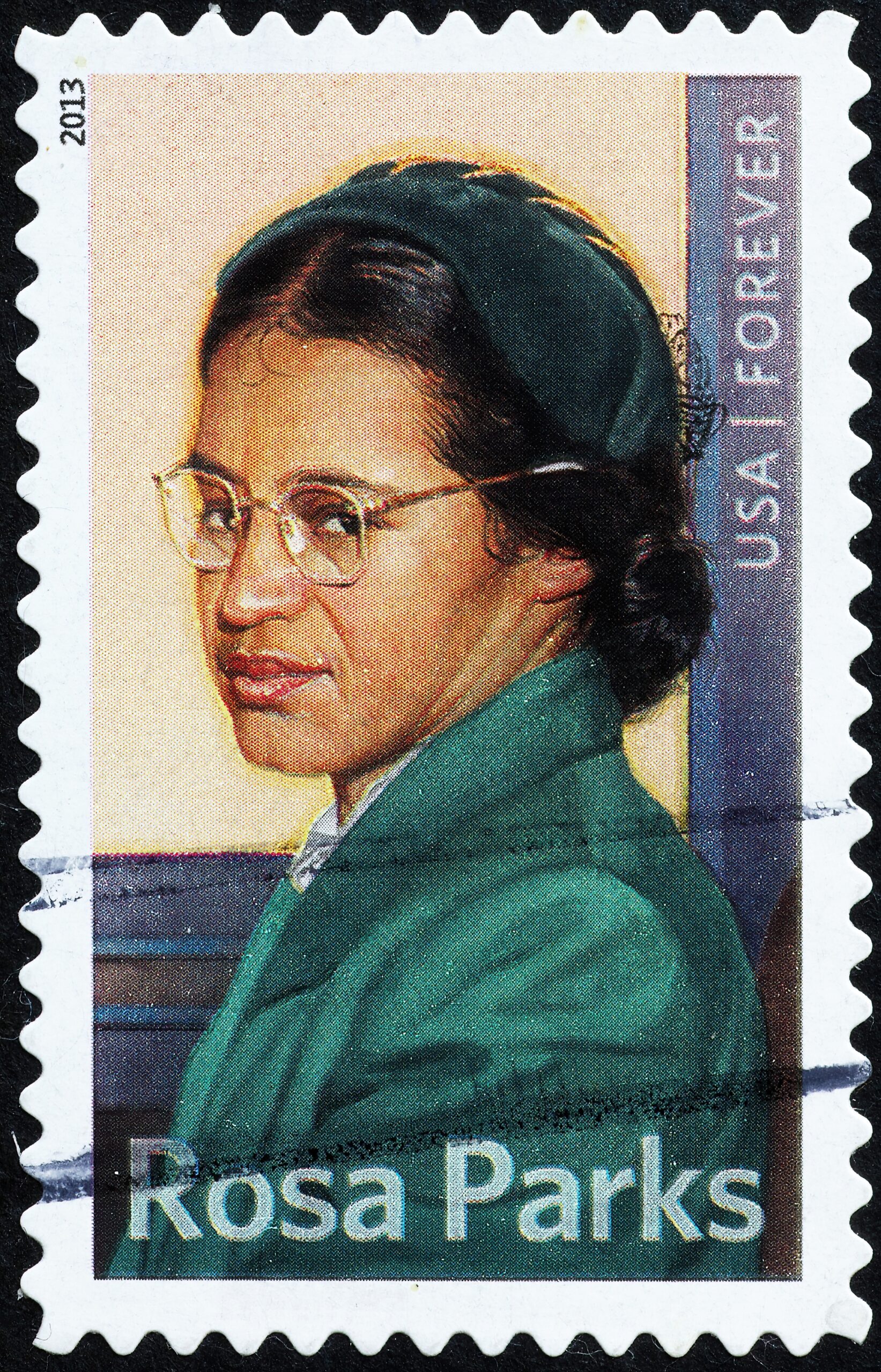
Rosa Parks: The Quiet Power That Sparked a Movement
Rosa Parks wasn’t loud. She didn’t give fiery speeches or seek the spotlight. Yet her quiet defiance on a bus in Montgomery, Alabama, in 1955 became a defining moment in the American civil rights movement.
This blog explores how a seamstress with steely resolve became the symbol of nonviolent resistance, and how her simple decision not to give up her seat led to profound and lasting change across the United States — and far beyond.
Outline
- Early Life: Strength Shaped by Struggle
- Montgomery’s Segregation Laws
- The Day That Changed Everything
- The Montgomery Bus Boycott
- The Power of Nonviolent Resistance
- Life After the Boycott
- Global Legacy and Continued Inspiration
- Final Reflections
Early Life: Strength Shaped by Struggle
Rosa Parks was born Rosa Louise McCauley in 1913 in Tuskegee, Alabama, a region steeped in racial segregation and inequality.
Raised by her mother and grandparents, she learned early on to stand up for herself, even when the world around her told her not to. Her family instilled in her the values of dignity, education, and quiet resilience.
Though she later worked as a seamstress, Parks had long been active in the fight for justice, joining the NAACP (National Association for the Advancement of Coloured People) in the 1940s.
Montgomery’s Segregation Laws
In the 1950s, the American South was governed by Jim Crow laws, which enforced racial segregation in every part of public life — schools, restaurants, toilets, and most notoriously, public transport.
Black passengers were required to:
- Sit at the back of the bus
- Give up their seats to white passengers if the front was full
- Enter through a separate door and pay at the front, but often couldn’t re-enter if the driver pulled away
These laws weren’t just humiliating — they were designed to dehumanise.
The Day That Changed Everything
On 1 December 1955, Rosa Parks boarded a bus in Montgomery after a long day of work. She took a seat in the ‘coloured’ section, as required.
But when the white section filled up, and the driver ordered her — and three others — to give up their seats, she refused.
“The only tired I was, was tired of giving in.” – Rosa Parks
Her quiet refusal led to her arrest and a $10 fine, but it also sparked outrage — and mobilisation.
Her act was not spontaneous rebellion — it was grounded in years of quiet activism and deliberate courage.
The Montgomery Bus Boycott
In response to her arrest, local leaders organised a bus boycott, led by a then little-known 26-year-old pastor: Dr Martin Luther King Jr.
For over a year:
- Black residents refused to ride city buses
- They walked miles to work and organised carpool systems
- Despite harassment and violence, they held strong
The boycott lasted 381 days and eventually led to a Supreme Court ruling declaring bus segregation unconstitutional.
Rosa’s single act of defiance became the match that lit the fire of the modern civil rights movement.
The Power of Nonviolent Resistance
Rosa Parks’ story is a powerful example of nonviolent protest — resistance without retaliation. She didn’t yell or lash out. She simply said “No.”
Her courage inspired:
- Student sit-ins
- Freedom rides
- Peaceful marches
- A global movement for justice and equality
💬 “People always say that I didn’t give up my seat because I was tired… No, the only tired I was, was tired of giving in.”
Her quiet strength taught the world that ordinary people can create extraordinary change.
6. Life After the Boycott
Despite her role in history, Parks paid a personal price:
- She lost her job
- Received threats for years
- Struggled financially
She eventually moved to Detroit, where she continued her activism, working for Congressman John Conyers and advocating for justice and prison reform.
🕊️ In 1999, she was awarded the Congressional Gold Medal and the Presidential Medal of Freedom, among many other honours.
Global Legacy and Continued Inspiration
Rosa Parks passed away in 2005, but her legacy is global.
Her actions inspired civil rights movements not just in the US, but in South Africa, Northern Ireland, and beyond. Today:
- Schools, streets, and libraries bear her name
- Her seat on the Montgomery bus is preserved as a symbol
- Her story is taught as an example of the power of one voice
She proved that you don’t have to shout to make history — sometimes, you just have to sit down and refuse to move.
Final Reflections
Rosa Parks’ legacy reminds us that real courage doesn’t always come from grand speeches or public platforms. Sometimes, it comes from doing the right thing when no one expects you to — especially when the cost is high.
She didn’t ask for the spotlight. She simply held her ground. And in doing so, she changed the course of history.
Quiet power is still power. And Rosa Parks showed the world just how loud it can be.


